
|
|
|
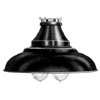
|
329 pattern
|
|
???
|
2 X ??? GLS
|
BC
|
Top Entry
|
No Gear
|
1933 Advert
|
|
|

|
350 pattern
|
|
???
|
??? GLS
|
BC
|
Top Entry
|
No Gear
|
1933 Advert
|
|
|
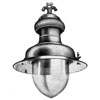
|
|
|

|
parade pattern
|
|
???
|
??? GLS
|
BC
|
Post Top
|
No Gear
|
1933 Advert
|
|
|
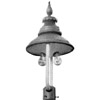
|
parade pattern
|
|
???
|
2x??? GLS
|
2xBC
|
Post Top
|
No Gear
|
1939 Advert
|
|
|
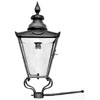
|
|
earlsfield
|
|
???
|
??? candle power
|
??? burners
|
Post Top
|
|
1933 Advert
|
|
|

|
|
dispersive
|
|
???
|
??? candle power
|
??? burners
|
Top Entry
|
|
1933 Advert
|
|
|

|
|
springfield
|
|
???
|
??? candle power
|
??? burners
|
Post Top
|
|
1933 Advert
|
|
|
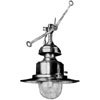
|
|
lobby
|
|
???
|
??? candle power
|
??? burners
|
Top Entry
|
|
1933 Advert
|
|
|
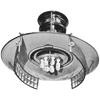

|
majestic
See also: Kempton & Son's Majestic
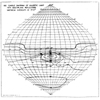
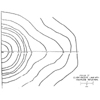 Ideal lamp for main street lighting (Group 'A').
A circular lantern designed for central suspension (but later could be used with bracket arms).
Fitted with Multiplane mirror reflectors. Designed for B.S.I. installations of Classes F, E or D
(later Group 'A').
The reflectors could be adjusted in-situ by way of wing-nuts so that
the beam can be raised or lowered. The reflector constitutes almost a complete "cut-off" thus
almost eliminating glare. Can be fitted with refractors, stainless steel wing reflectors
or "Multiplane" mirror
glass reflectors. Entirely storm proof and gives a maximum and even illumination on the road surface.
Has a 'Type 2 Distribution' (Semi Cut-Off) according to the draft 1945 specification.
Ideal lamp for main street lighting (Group 'A').
A circular lantern designed for central suspension (but later could be used with bracket arms).
Fitted with Multiplane mirror reflectors. Designed for B.S.I. installations of Classes F, E or D
(later Group 'A').
The reflectors could be adjusted in-situ by way of wing-nuts so that
the beam can be raised or lowered. The reflector constitutes almost a complete "cut-off" thus
almost eliminating glare. Can be fitted with refractors, stainless steel wing reflectors
or "Multiplane" mirror
glass reflectors. Entirely storm proof and gives a maximum and even illumination on the road surface.
Has a 'Type 2 Distribution' (Semi Cut-Off) according to the draft 1945 specification.
Post-war houses between 9 to 12 No. 2 mantles. The "Multiplane" faceted mirror glass directional reflectors, which are
attached to the enamelled steel outer reflectors, are readily adjustable to allow for gradients and such alterations in
spacing as are required by the configuration of the road. The mantles are thereby screened from the view of approaching
motorists and light about the horizontal is re-directed at a vertical angle of from 70° to 85° according to
requirements. Suitable for central suspension or for kerb mounting, over 95% of the light being
usefully employed below the horizontal. The standard lantern with a 13" diameter bowl and
30" outer enamelled reflector may be supplied with three sizes of burner: 12 light, 10 light and
8 light No. 2 mantles.
|
|
???
|
1000 candle power
|
10-15 mantles
(Later 8-12 mantles)
|
Top Entry
|
|
1946 Advert
1946 Programme
1947 Programme
1947 Journal
|
|
|
|
|
stellaris
See also: Kempton & Son's Stellaris
For the lighting of Group B narrow roads. Incorporates curved mirror glass reflectors in the lantern
roof, for the re-direction of upper hemispherical light, and provides for such roads adequate illumination
with the utmost economy in fuel consumption.
|
|
???
|
??? candle power
|
??? mantles
|
Top Entry
|
|
1946 Advert
1946 Programme
|
|
|
|
|
heathfield
See also: Kempton & Son's Heathfield
Recommended for side street lighting.
Can be fitted with refractors, stainless steel wing reflectors or "Multiplane" mirror
glass reflectors. Exceptionally strong and is rain and wind proof. It is a taper square suspension lantern,
with a pre-war reputation for robustness of construction and effective performance, and has its place
in the post-war reconstruction of damaged roads.
|
|
???
|
??? candle power
|
??? mantles
|
Top Entry
|
|
1946 Advert
1946 Programme
1947 Programme
|
|
|

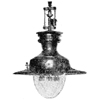
|
kemborn
See also: Kempton & Son's Kemborn
A circular lantern designed for central suspension. Fitted with Multiplane mirror glass
reflectors. Has a similar appearance to the Majestic but smaller and used for the lighting
of secondary and residential roads (Group B). Can be fitted with refractors,
stainless steel wing reflectors or "Multiplane" mirror glass reflectors. Gives an output of
1200 to 2400 lumens. Design slightly changed post-war.
It is a bowl suspension lantern,
with a pre-war reputation for robustness of construction and effective performance, and has its place
in the post-war reconstruction of damaged roads.
|
|
???
|
400 candle power
|
4-6 mantles
|
Top Entry
|
|
1946 Advert
1946 Programme
1947 Programme
|
|
|
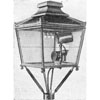
|
elmax
For the lighting of Group B roads. Should meet with the approval of all public lighting engineers
who wish to preserve the sound construction, effective performance and easy of maintenance of the
taper-square lantern, but who regard the shape of the latter as out-of-date. Three important features of the lantern
are the ventilating head with pressed copper roof; the new venturi giving complete combustion and improved aeration; and
the mirror glass back reflectors which redirect light near and above the horizontal at vertical angles of between 75°
and 80°. Ample light is provided on the footpaths and building fronts behind the lanterns.
The directive equipment consists of a four-way parabolic enamelled top reflector and a pair of
stippled mirror glass back reflectors. In 1947 a new pattern burner was introduced, the construction
of which was largely in pressed copper. The lantern may incorporate 2 to 4 mantles, Nos. 1 or
2 in line.
|
|
???
|
??? candle power
|
2-4 mantles
|
Post Top
|
|
1946 Advert
1946 Programme
1947 Programme
1947 Journal
|
|
|
|
|
tudor
For the lighting of Group B roads in "better-class" districts. A favourite of the
architect and street planner. Has been improved with the addition of directive equipment.
|
|
???
|
??? candle power
|
??? mantles
|
Top Entry
|
|
1946 Advert
1946 Programme
1947 Programme
|
|
|



